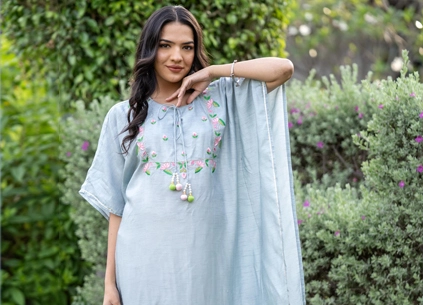The Art of Creating Indian Block Print Fabric
Posted: August 29, 2021
Posted: August 29, 2021
The bequest of creating traditional Indian block print fabric involves manual labor and meticulous efforts, still it is carried on from prehistoric times to today because of the exquisiteness of the handmade merchandise. Bits and pieces found in the remains of Mohenjo Daro, one of the oldest cities of the Indus Valley society, provide corroboration that India has been proficient in block printing even during the 3000 BCE. This knack thrived under the benefaction of the imperial kings during historic times. The 17th century saw a revolution of the skill leading to increase in its popularity.
Even in today’s 21st century, Indian block print fabric by hand is prominently practiced by lakhs of artisans for the delight of possessor who explore their fabrics all over the world.
The primary apparatus to create block print on fabric are the wood blocks, the fabric off-course and the dye. Five carvers take at least two days to craft an elaborate design in a teak block used as printing component. For every color used to create design, separate block is mandatory and usually six to seven shades are used in a specialized design. A team of about fifteen people, takes up to ten hours to get ready one block printed garment, each person having responsibility of separate task.
The process of creating inexpensive Indian block print fabric by the yard starts with the wood block. The carvers use designs to cut the block into diverse sizes and shapes. The top block portion has a knob for the printers (person uses the block to print) to seize. Every block has three or four outlets through which it permits the air to pass and allows excess dye to pinch away. Various spots are impressed into the block that the printers use as assignment display as they pick and move block to the next plot of fabric. All blocks are soaked in oil for up to fifteen days to make the wood softer.
Subsequently, workforce stretches layers of jute stretched on a table. The jute layers serve as wadding that create resiliency to the surface for printing. The labors lock the fabric to the jute stuffing with pins.
Now printers are all set, they select one out of the three methods.
Discharge Printing- Printers dye the fabric, and then they chemically eliminate the dye from the cloth which will take the blueprint. The bleached segments are treated, after which dye is again applied to produce the designer Indian cotton fabric by the yard.
Direct block printing- Whole bleached cloth is dyed. The background color is left, the printer carry on printing designs on the dyed cloth using the wood blocks.
Resist printing- The block is utilized, not for dyeing, but to impose resistant, it can be made of clay, resin, wax etc. While dyeing, different sections of cloth are covered by the impermeable resist that do not absorb the dye. The resist is aloof and the designs are created in reverse.
The pattern is stamped all over fabric, using any of the three methods, the cloth is proceeded to fasten the dyes. The customary cotton Indian fabric by the yard is dried out in the sunlight. Once it dries, the textile is twirled in papers and steamed in unique boilers. Then, the fabric is rinse, dehydrated in the sun once more, and ironed. This entire process donates to fixing the coloring and creating the dye vibrant.
This procedure of block printing Indian block print fabric by the yard is still in trend and has survived for centuries.




Validate your login
Sign In
Create New Account